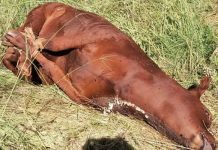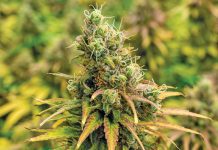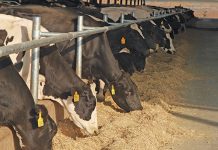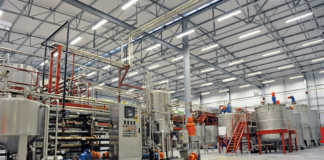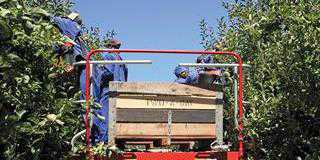ZZ2 is a farming enterprise best known for its vast tomato operation in Moeketsi, Limpopo. It also has farms in Politsi, Polokwane and Musina in the same province, Ceres and Riebeek West in the Western Cape and Langkloof in the Eastern Cape.
But ZZ2 hit a production wall 10 years ago due to its dependence on synthetic fertilisers and pesticides. Plants became increasingly susceptible to nematodes, fungi and insects. Higher volumes of synthetic fertilisers were also needed to produce the same tomato, onion, avocado, apple and pear yields as in the past.
Tommy van Zyl, CEO of ZZ2, realised the company was heading for a crash because of the economic situation, as well as the environmental impact of their increased synthetic fertiliser use. The soil became barren and there was hardly a crow left on the farm. Tommy had no choice – the only way out of the situation was to incorporate more environmentally friendly production methods.
Going natural versus organic
The company didn’t go completely organic, primarily because it would have decreased production – reductions have been proved to be more than 70% when farmers switch from conventional to organic systems. Production improves once the soil is restored, but the company couldn’t afford such a huge decrease, explains Johann Nöffke, production manager at ZZ2. Piet Prinsloo, project manager adds, “There’s little scientific evidence or basis to support all the organic claims and production methods,” he says.
“Each organic audit company seems to have its own rules and regulations. Most significantly, South Africa still doesn’t have any organic legislation. So when we decided on the change-over, we wanted to base our production philosophy on sound scientific principles which incorporate environmentally friendly methods to build the soil and control pests, as well as the sensible use of synthetic fertiliser.”
In the process, they’ve been involved in many research projects to find more effective and environmentally compatible methods to optimise production. ZZ2 was the first company in South Africa to brand this type of production as natuurboerdery (natural farming). But Piet says the company isn’t possessive of the brand and would like other farmers to also market their products under it. It would be more affordable than being subjected to an organic audit by a foreign company.
Trial and error and a change of focus
But changing over wasn’t easy. In 1997 the incorporation of the predatory wasp Trichogramma proved to be economically unviable. This was imported from the US to control red spider mite, aphids and caterpillar eggs. “Limpopo isn’t their natural habitat – it’s too hot and humid and the vegetation they’re used to doesn’t grow here. As a result, we had to release the wasps every week,” says Johann. “This exercise taught us that it’s better to use local rather than imported species.
Making compost on-farm
ZZ2’s focus has shifted from solely feeding the crops to creating healthy soil and a healthy production environment. Soil correction via a mixture of chicken and cattle manure as well as compost is done six weeks before planting. “We use manure because it’s a rich source of nitrogen and phosphates,” Johann explains. Around 13m³/ha of compost and 4m³/ha of manure per hectare are worked into the soil, depending on requirements. Producing enough compost for such a large enterprise is a mammoth task – the company has more than 1 700ha under tomatoes in Limpopo alone. But ZZ2 manages to make 50 000m³ of thermal compost a year.
Most of the ingredients like plant residue, manure and straw are sourced on-farm. Piet says they used to get wood chips and shavings from alien trees cleared on 1 400ha of company land. These have now been completely cleared and wood chips and shavings have to be sourced from surrounding sawmills. He explains this has worked out much cheaper than having to fell and chop trees on your own land, as you don’t need any expensive equipment and only have to pay for transportation.
The farm has around 5 600 cattle, but they are unable to supply enough dung for all the compost needed. Dung sometimes has to be sourced from 450km away, says Ferdie Terreblance, production manager of compost, compost tea and fermented products at ZZ2. Chicken manure has to be sourced from 120km away.
To overcome this transportation problem and make compost more accessible, the company is considering decentralising its compost production. Compost is inoculated with fungi from the mother heap. Wood chips are also inoculated with a fungi-dominant compost tea before being worked into the compost. This is important, as tomatoes need a fungi-dominant environment for optimal production, says Johann.
But onions prefer a bacteria-dominant environment at a more advanced stage of decomposition, because they need a lot of nitrogen during germination. However, the nitrification process must be completed six weeks after planting as a large supply of nitrogen during bulb formation and later production stages would be problematic. The compost is treated with effective microorganisms (EM) to stimulate microbial activity.
EM is a highly concentrated mixture consisting primarily of yeasts, as well as photosynthetic and lactic acid bacteria. “EM is an Eastern concept, but local company Effective Microorganism Organisation of South Africa (Emrosa) has imported the technology to produce it from isolates found here,” says Stephanus Malherbe, laboratory manager at ZZ2’s lab, which is registered with the Soil Foodweb Institute.
“Therefore no foreign organisms or potential new threats are introduced into the production system when using Emrosa’s products.” The lab uses microscopic methods instead of agar culture techniques to evaluate soil microbiology. “EM helps to produce a diverse population of microbes,” explains Stephanus. “This is always preferable over having a few dominant species – whether they’re beneficial or not – as healthy competition helps maintain harmony in a system.” A variety of EM products are applied for specific reasons and lime and gypsum, or a mixture of the two are worked into some of the compost for use on land with a calcium deficiency.
Value of measurement
Regular measurement is vital on the farm. “To measure is to know and we need to know what we’re putting into the soil,” says Johann. New chemical products and products produced on the farm are also tested for heavy metals to ensure they don’t pose a health risk. Additional soil amendments are applied only four to eight weeks after the tomato plants are established. Weekly leaf analysis is done to determine the nutrient demand according to the growth stage of the plant.
Nutrients are then supplied via drip irrigation or foliar feeds. Onions and tomatoes receive around 1 200l„“ of compost tea per hectare and 120l„“ of EM per hectare per season. Humic and fulvic acids are also used as a good source of carbon and they help make “fixed” nutrients available to plants. Humates help reduce soil compaction and fulvic acid used with foliar feed improves foliar feed efficiency.
Compost tea
Ferdie points out that compost tea is perishable. “It has to be used within six hours after it was made or it’ll lose its effect. We always send our compost tea to the laboratory to determine its composition, but as its production has now become a standardised procedure, its quality is consistent.” Stephanus believes the secret to producing good-quality compost tea is using good-quality compost. The microbial diversity in compost and its nutrient composition need to be measured to determine quality.
ZZ2 makes compost tea from its own compost, adding fishmeal, humates, kelp and EM to produce fungi-dominant tea for tomatoes. Brown sugar and molasses are added to the mixture for a bacteria-dominant product, as the two sugars serve as food for the bacteria. It’s vital to work in a clean environment as the risk of producing a poor quality or even poisonous concoction significantly increases in a dirty one, Ferdie explains.
ZZ2 made their first compost tea in an aerated brewer imported from the US, but it didn’t work very well as it created a vortex instead of simply bubbling. The company then built its own brewers from tanks, pumps and turners, which were much cheaper and more effective than the sophisticated American product. The tea brews for around 36 hours before it’s ready for use.
The rewards of natuurboerdery
Natuurboerdery has paid off for ZZ2 – there’s been a significant improvement in soil fertility and microbial diversity. Yield has improved and the company has been able to cut its synthetic fertiliser and chemical usage by almost 60%. Chemical control methods are now only used if there isn’t a biological control alternative. In such a case, ZZ2 uses the product with the least environmental impact and at the lowest effective dosage.
Piet says the company’s secret to success is that its green project isn’t being spearheaded by one person – everyone’s involved and believes in what they’re doing. He adds that natuurboerdery offers South African farmers the chance to become part of the international green movement without the risks posed by organics. “Natuurboerdery is a farming method which seeks to find simplicity on the far side of complexity,” Piet concludes.
Contact Johann Nöffke at (015) 395 2135 or e-mail [email protected].


